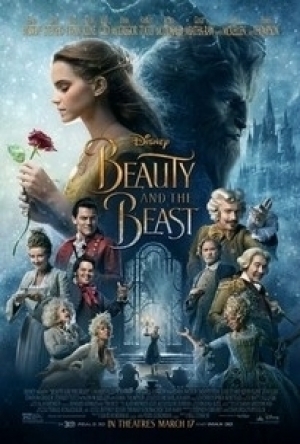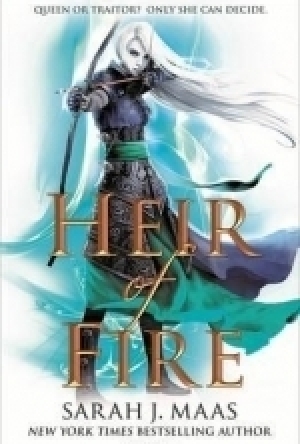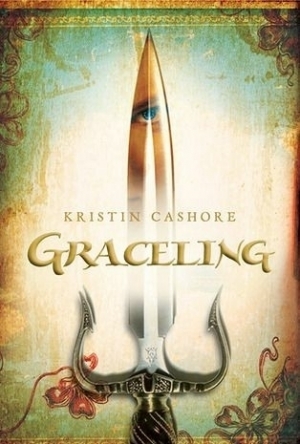Movie Metropolis (309 KP) rated Beauty and the Beast (2017) in Movies
Jun 10, 2019 (Updated Jun 10, 2019)
Last year’s The Jungle Book earned just shy of $1billion worldwide, their Marvel Cinematic Universe has taken upwards of $5billion and don’t get me started on Star Wars. Continuing the studio’s trend of remaking their animated features is Beauty & the Beast, but does this modern day reimagining of a fairly modern classic conjure up memories of 1991?
Belle (Emma Watson), a bright, beautiful and independent young woman, is taken prisoner by a beast (Dan Stevens) in its castle. Despite her fears, she befriends the castle’s enchanted staff including Cogsworth (Ian McKellen) and Lumiere (Ewan McGregor) and tries her best to learn to look beyond the beast’s hideous exterior, allowing her to recognise the kind heart and soul of the true prince that hides on the inside.
There were gasps of shock when Harry Potter actress Emma Watson was cast as Belle, but thankfully after sitting through 129 minutes of her singing and dancing, there is no reason to be concerned. She slots into the role of a Disney princess with ease, though it’s still incredibly difficult to see her as anything but the talented witch from Hogwarts.
The rest of the cast is very good with the exception of Ewan McGregor’s dreadful French accent. It can be forgiven however because the sense of nostalgia that the castle’s staff bring to the table is wonderful. Ian McKellen, Emma Thompson, Stanley Tucci all lend their voices with Thompson taking over from Angela Lansbury beautifully. Her rendition of the iconic titular song brings goose bumps.
Elsewhere, Luke Evans is an excellent choice to play villainous Gaston. It’s hard to imagine anyone better to play the gluttonous womaniser and Josh Gad is sublime as his sidekick.
Dan Stevens’ transformation into Beast is one that’s a little bit harder to judge. There is no doubt he is up to the task of playing this iconic character, but the limits of current motion capture technology can sometimes render him a little playdoh like. There are fleeting moments when the illusion is shattered because of something as trivial as the way his fur moves.
Nevertheless, the rest of the special effects are absolutely top notch. The costumes and the set design all integrate perfectly with the naturally heavy use of CGI to create a film that harks back to its predecessor in every way.
Whilst not as dark as last year’s The Jungle Book, Beauty & the Beast is still a deeply disturbing film at times, made all the more so by its recreation in live-action. Young children may find it a troubling watch, a reason why the BBFC has awarded it a PG rating rather than the typical U that most other Disney features receive.
Overall, Beauty & the Beast is a faithful recreation of its 1991 predecessor and that comes with its own set of challenges. The animated version is widely regarded as one of Disney’s best films, so director Bill Condon (Dreamgirls, Twilight) had massive shoes to fill. For the most part, he’s succeeded in crafting a visually stunning and poignant movie that’s only drawbacks are its length and poor motion capture. Much better than Cinderella, but not quite as ground-breaking as The Jungle Book, it’s a lovely watch for all the family.
https://moviemetropolis.net/2017/03/17/a-tale-as-old-as-time-beauty-the-beast-review/
Purple Phoenix Games (2266 KP) rated Kingdomino in Tabletop Games
Jun 12, 2019
DISCLAIMER: This review is focused on vanilla Kingdomino. We have the Age of Giants expansion and will be reviewing that as well. Maybe. If or when we do we will add that content to this review or link to it here. -T
Yep. That’s the entire game. On your turn you take the tile your meeple is currently sitting on and place it on another tile from the current offer column. That new tile will be your tile to be placed during the next round. Now you take the tile you just moved from and place it anywhere on your kingdom “grid” matching up similar land types if you can. Each crown icon shown in a land type will score 1 VP per land tile that is connected and matching. Example: you have a sand tile with two crowns on it. You have connected several tiles together and you have a connected sand area of seven squares showing sand. Two crowns times seven squares equals 14 VPs for that sand area. Just do that for all areas with crowns to get your final score.
Where is the conflict, you ask? Every good story has a conflict! Well, you cannot take just ANY tile you want. The tiles are placed in the offer column in numeric order (on the backs of the tiles are numbers). Then they are flipped so you can see what is coming up on the next round. Whomever chooses the lowest number tile goes first, and subsequently chooses their tile for the next round. Herein lies the conflict and what little player interaction there is in the game: you can block your opponent(s) by taking the tiles you see they may want. I personally do not play any games this way, but it’s a valid strategy. I am in it to win it, not in it to make you lose it.
Ok, so at first glance this is a children’s game. It can also be a hard sell to get people to want to play it. “It’s like Dominoes, but better.” That usually doesn’t spark a whole lot of energy and interest when I open with that. I am open to better sales pitches because this is a truly great game. Yes, it’s ultimately Dominoes at its heart. Yes, it’s very light. But dang it, this game is really fun!
The little cardboard castles that you build around are cute, but also kinda unnecessary. The meeples are, well, meeples. Not really too exciting to look at, but they are merely there to show player color. The domino tiles are a good thickness and the art is fun and whimsical. I LIKE looking at the tiles and sometimes finding a little hidden easter egg in there. I have no complaints about the components. Good on you, Blue Orange Games.
The game play is so simple but also so engaging! My mother, who usually only plays Rummikub, actually agreed to play this with me and she really really enjoyed it! Kids can play it and do really well. Older adults can too! It’s a great game to consider for gateway gaming, for a filler palate cleanser, or even for lighthearted tournament play. It just works well in so many scenarios. Is it my favorite game of all time? No. Is it in my Top 10? No. But I can guarantee you that I will never get rid of this little gem.
That said, Purple Phoenix Games gives this title a royal 14 / 18. Build on, Kingdomino!
https://purplephoenixgames.wordpress.com/2019/02/27/kingdomino-review/
Becca Major (96 KP) rated The Nutcracker Prince (1990) in Movies
Jan 20, 2018
The Nutcracker Prince is an enjoyable little children's movie that is a strange mashup of the novel by E.T.A. Hoffman and the popular ballet. The story is fairly simple and follows Clara as she interacts with her family at the yearly Christmas party, where she and her siblings receive the titular Nutcracker from their Uncle Drosselmeyer, as well as a golden castle. He then proceeds to tell Clara about the Nutcracker’s backstory. Then Fritz, Clara’s little brother, breaks the Nutcracker and she scolds him.
Later that night, the Mouse King attacks, attempting to kill the Nutcracker, and Clara watches the toys do battle with the Mouse King’s army. Clara ends up tripping and hurting herself, which makes her bedridden. During this time, Fritz brings her a partially eaten box of chocolates, which she puts in her nightstand drawer. Later that night, the Mouse King approaches her and threatens her. Clara offers him the box of chocolates and when he hops in the drawer to eat them, she shuts him in. She runs downstairs to protect the Nutcracker, which transitions to the second attack of the Mouse King and his army. The toys and mice battle, and eventually the Nutcracker runs the Mouse King through (off-screen of course), and the day is won.
The Nutcracker invites Clara to visit the Land of the Dolls. She does and is impressed by the beauty around her, and the Nutcracker asks her to stay and become his Queen. She turns him down, for good reasons, and everyone in the Land of the Dolls starts to turn back into lifeless objects. Then, to make everything weirder, the “dead” Mouse King shows up for one more hurrah and fights with Clara. He ends up falling over the balcony and dying. Clara returns home via “It was just a dream,” freaks out, runs to her Uncle Drosselmeyer’s house, and meets his nephew, who looks exactly like the Nutcracker, but not really.
Overall:
When all is said and done, I would have to say that I like the beginning of the movie a lot more than the end. The rules for how the magic works make sense, and the characters are pretty well defined. Clara is competitive with her siblings and thinks they are weird, and she is basically about as active as the material allows her to be. The Nutcracker himself is pretty bland and soft-spoken in comparison, but he does try his best with the situation he’s in, so I can’t dislike him. The Mouse King is somewhat threatening, if one dimensional. There isn’t much to say about the side characters. Clara’s siblings are fine, as are most of the side characters. With the exception of Marie, none of them are particularly annoying.
The music is fine, if occasionally distracting. It is Tschaikowsky, after all.
The animation is pretty good for a direct to VHS movie. The run-cycles are pretty goofy, but it flows and has detail.
I like the obvious nods to the aspects of the book that the writers changed, such as naming the new doll Marie. As someone who read the book recently, it was nice to know that they cared about the material they were adapting.
In the end, I feel that considering the movie is twenty-eight years old, it holds up pretty good. I would definitely watch it again and probably share it with the students in my class, or with my nephew.
Kyera (8 KP) rated Heir of Fire in Books
Feb 1, 2018
In this book, Celaena must finally face the truth of her past and the memories that she has tried to forget for the last decade. We see her as less of the snarky assassin and more of the stubborn, determined true Queen in this book. She must fight to prove herself and earn the answers from the Fae Queen Maeve about the Wyrdkeys. The development that we see over the course of this novel is brilliant. I loved seeing Celaena shed some of her old self and embrace the person she was meant to be. The Queen, Aelin Fireheart has officially made her debut in this novel.
Through events in this novel and flashbacks, we get a glimpse into Aelin's young life which was the perfect way to add to her character's development. It also introduced us to Aedion, her cousin, and fiercest ally, even though they haven't seen one another in a decade. It was so heartwarming to see his dedication, even after all that time to the family he loved so dearly.
Dorian doesn't have a major role or experience significant growth in this book, but he is better able to control his powers. With so many storylines and main characters, I feel like its understandable that he didn't get as much time but he still feels lost in the shuffle. He's especially lost because Celaena is sent away on a mission by the King and Chaol has essentially abandoned him, so he is on his own. The honourable Chaol struggles immensely in this book because he's so used to his worldview and is have trouble coming to grips with the changes that have rocked the foundation of everything he believes in.
My favourite addition to this book in terms of characters was Rowan Whitethorn. He was the first true Fae that we spent time with and got to watch evolve, even though he was centuries old and should have been set in his ways. He pushed Aelin and was exactly what she needed to rebuild herself after the events of Crown of Midnight. The two also had this back and forth that was entertaining to read.
The biggest change in perspective was the introduction of the Ironteeth witches and Manon's viewpoint. She is a tough, vicious, ruthless Blackbeak witch. At first, you might not like the switch and just be waiting for it to go back to the familiar characters we've grown to love but after a while, I think you'll be invested. The Wyvern, Abraxos, was by far my favourite non-human (and probably my favourite character, period) in this series. I'm a sucker for animals and he reminds me of Toothless from How to Train Your Dragon. He is tough, protective, loving and stubborn, despite his not so rosy life.
This book continues the world development and brings us out of Adarlan. Although we switch perspectives and see the goings-on in the castle - the focus is on Aelin and her journey. We get to see a demi-Fae settlement on the border of Doranelle and are introduced to more characters who worm their way into your heart.
There's not much else I can say without spoilers, but I definitely enjoyed this read immensely and cannot wait to continue my re-read.
postapocalypticplayground (27 KP) rated Heart of Thorns (Heart of Thorns #1) in Books
Aug 13, 2018
The book also raises a lot about feminism, I have to say that it take a while to get to this point and to start I felt it was yet again another misrepresentation that Fighter = Feminist but thankfully all that changed. It makes much of the differences in society between men and women and how women need to fight to be anything but a pair of legs that needed to open. The origins of the magic within the story are really quite heartbreaking and born out of a necessity for self preservation which naturally becomes misrepresented and skewed over time to make magic a true evil which is feared by men. There is an element of the macabre in the King's fascination with the slaughter of those with magic and his trophy room will have your stomach clenching.
This book does misdirection well and it's all the more easier to achieve with a large supporting cast. I genuinely was left with a number of WTF moments as the story went on, I had to re-read a few pages just to confirm that the twist was as awesome as it was and this book has them in spades towards the end.
However, all this needs to be offset by some things that made it fall just short for me. It's clear that Mia has studied medicine, but her overly complex use of medical descriptions of bodily parts is unnecessary and makes for jarring reading "She dug her fingertips into the bridge of her nose. 'The sphenoid bone. It's like my whole cerebrum is on fire." Why not just say she had a headache? It's also mega tropey - I don't as a rule mind tropes in books, they exist for a reason but this book turned out so many including the ever present MC as a huntress with the sister who dreamed of marrying a nice prince, that I found my eyes rolling. There is also a lot of tick boxing going on in respect of LGBT diversity, there was a neon sign for one character as if the author was labouring the point - the disappointing thing is that this element did fit organically into the story in a really beautiful yet heartbreaking way at a later time which made me feel that the earlier depiction was somewhat unnecessary.
Whilst there are some failings, this is an enjoyable read with plenty of magic, mystery, and misdirection and if you are in the mood for an adventure you will hopefully enjoy Heart of Thorns
3*
This is a fantasy world were Gracelings are known by their differently coloured eyes. Their Graces can show themselves in any number of ways some could be graced with cooking skills, numeracy whilst others have graces for fighting. Enter the main character Katsa, who is being used by her Uncle Randa the King of the Middluns. All Gracelings are owned by their kings and are used by them unless their graces are not that important or useful. Katsa is unfortunate that her Grace is exceptional. She is almost unbeatable in a fight, is skilled at archery and sword fighting and can kill a man before he realises what is happening. But Katsa is unwilling to be just a hired hand, used to deal out Randa’s often unfair idea of justice. So she has formed a secret council, a network of people who aim to help those who cannot help themselves and deal out a better form of justice where they can. All under the noses of the kings from all the kingdoms. It is on one of these very missions that Katsa rescues a Lienid, Prince Tealiff, and runs into another Graceling with exceptional skills. After knocking him out, and leaving him at the castle she has rescued Prince Tealiff from Katsa is surprised when he turns up at her home and turns out to be Prince Tealiffs grandson, known to everyone as Po. After the Po tree of lienid whose leaves grown silver and gold to match Prince Po’s eyes. Together to two embark on a mission which changes who Katsa believes she can be.
I completely loved the character of Po. Personally, I wish the author didn’t have so much against marriage, because I just feel like their love story was lacking something. Some sort of final closure, especially since I have found out these characters are not even to be used in the other books. I loved the way Po was able to bring out the best in Katsa and but I would have liked to have seen more of Po developing from Katsa influence. Because she most definitely had an influence on him. This is a very fine YA fantasy with the only negative being some odd and awkward naming of places and characters was a very enjoyable read. The views of the author on marriage and women’s independence does come through pretty strongly, with no wavering of the opinion. This for me was too strong for the story, I am not saying it needed to turn into an all mighty lovey dovey fest, but, there may have been some value in creating a symbiotic relationship were they are both equal in the relationship and committed without getting married. It sort of felt, if not said, that one day she would just pack up and move on and he needed to be ready to except that. Taken at face value I did enjoy this book just felt some of the themes came on a little strong for my liking.

Audio Books by Audiobooks
Book and Entertainment
App
Wish you could read more but don’t have the time? You’ll love audiobooks! Audiobooks.com is the...
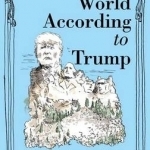
The World According to Trump: Humble Words from the Man Who Would be King, President, Ruler of the World
Book
"I don't put on any airs," Donald J Trump once told a journalist, from behind his "100% mahogany"...

SoundHound - Music Discovery
Music and Entertainment
App
Music Discovery, Identification, & Voice-Controlled player 300M+ downloads, billions of songs...
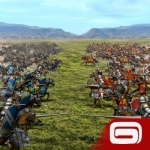
March of Empires
Games and Social Networking
App
Brace yourself for an age of massive medieval war, where you will march over your rivals’ burning...
